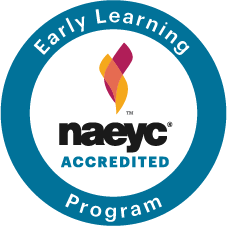Curriculum
The PIFS curriculum reflects current knowledge in the field of early childhood education and facilitates teachers’ work to promote growth and development in eight domains: social and emotional, physical health, language and literacy, creative arts, mathematics, science, cognition, and social studies.
Teachers utilize a combination of intentional teaching, guided by developmental appropriate and nationally and locally recognized practices and standards, and reflective and responsive teaching that considers the interests and needs of the children in the classroom to thoughtfully plan learning experiences. The environment is considered the “third teacher” as it is intentionally designed to engage children and allow them access to art and building materials, books, dramatic play items, games, writing materials, and toys that can be used in open-ended and varied ways. As children feel ownership of and comfort in their classroom space, they develop their own goals and questions for learning, which become the catalyst for teachers’ planning.
Free and active play both inside and out is an important part of each child’s school day. Our resource classes complement classroom learning through incorporation of studio and sensory art, music, nature, and science activities taught by teachers with dedicated experience in these areas. PIFS prides itself on putting children in close contact with nature. The science room and gardens, numerous outdoor play areas and open spaces encourage a relationship with and understanding of plants and animals. There is a strong emphasis on environmental awareness and caring for the planet in ways appropriate to early childhood.
Our classroom environments reflect the individuality that our families bring to our program. Families and home life are a part of daily discussion and routines, as a strong connection between home and school is essential for young children. Children are taught in English but great respect for each child’s home language and culture is shown by teachers and is evident in teacher/child interactions, the support the children are offered, and the welcoming classroom environments.


